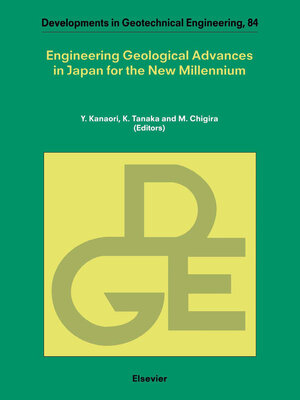Engineering Geological Advances in Japan for the New Millennium
ebook ∣ Developments in Geotechnical Engineering
By Y. Kanaori

Sign up to save your library
With an OverDrive account, you can save your favorite libraries for at-a-glance information about availability. Find out more about OverDrive accounts.
Find this title in Libby, the library reading app by OverDrive.



Search for a digital library with this title
Title found at these libraries:
| Library Name | Distance |
|---|---|
| Loading... |
The geology of the Japanese Islands is enormously complicated because of the active tectonism that has taken place on the boundary between the Pacific and Eurasian plates. Geological formations there are intricately deformed and displaced by many active faults. Hence, in planning for and siting large construction projects, such as nuclear power stations, underground power stations, and the underground facility for High-Level Radioactive Waste (HLW), more detailed investigations are necessary than in more stable parts of the world. Only then can assessments be made as to the long-term stability, hydrological characteristics and mechanical characteristics of geological conditions.This book offers recent research studies in engineering geology in Japan. It contains 27 papers of scope and importance sufficient to allow engineering geologists throughout the world to understand more of the present state of research and study in Japan.The title also includes a number of current topics in which Japanese engineering geologists have participated: the planning for and siting of large construction, such as nuclear power stations, underground power stations, and the underground facility for High-Level Radioactive Waste (HLW); the construction project of highways and nuclear power stations and new energy developments such as those for geothermal energy; the countermeasures for natural hazards caused by earthquakes, landslides, and slope, and stone deterioration; and alteration because of weathering at and near the Earth's surface.







